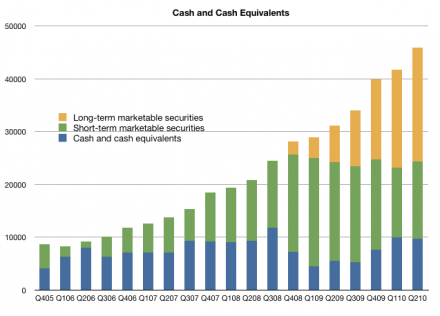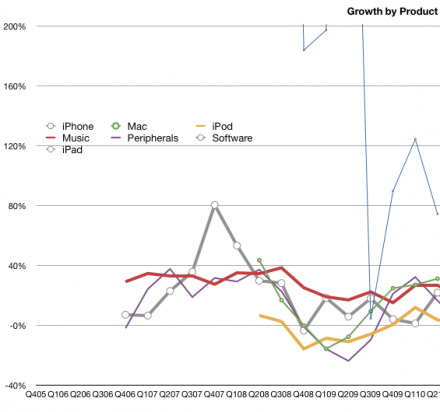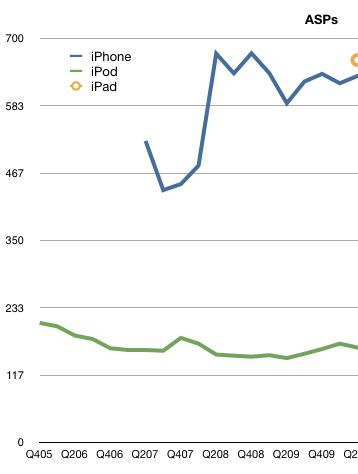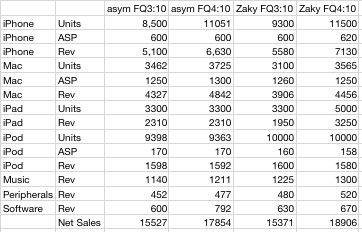During the last quarter, the company added $4.1 billion in cash to reach a total of $45.839 billion or $49.43 per fully diluted share. This is divided into three types of holdings (long- and short-term marketable securities and cash equivalents).
Some (most?) financial reporting services do not include long-term marketable securities in their databases. This is a tragic error which mis-states most of the balance sheet ratios that investors may depend on. Offending sources include Capital IQ (which feeds finance.yahoo.com.)
To illustrate, the following chart shows the total cash equivalents for the company. The orange colored bars represent long-term securities. If they are excluded, an investor may conclude that Apple’s cash has been *declining* since 2008 when the opposite is true. The company is shifting an increasingly larger proportion of its holdings to long-term (but fully liquid) securities.
The company devotes 9 pages in its 10-Q to describe and value the cash positions it holds. It’s a pity that most aggregators of the company data don’t bother to note $21 billion in assets.





